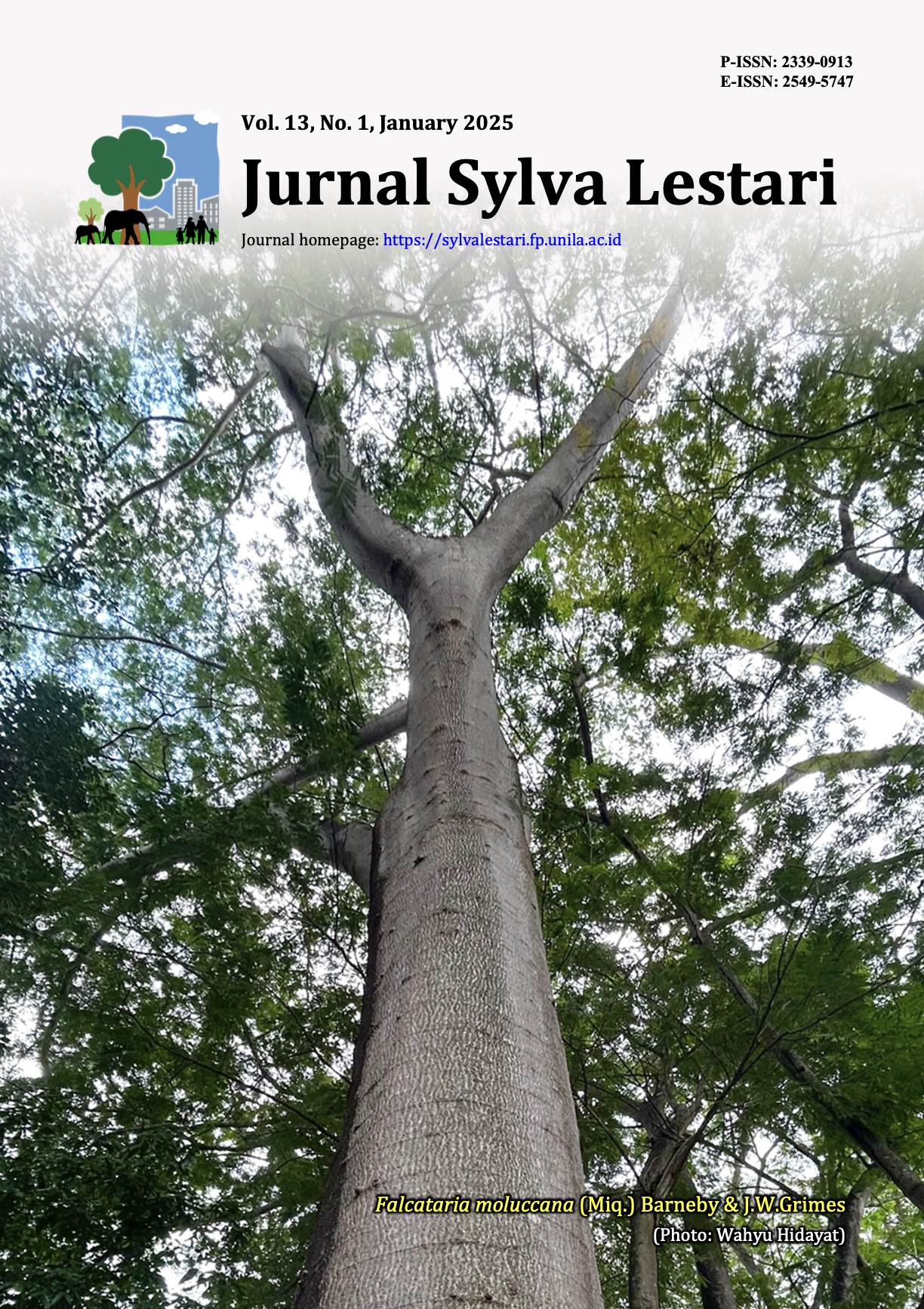Impact of Mangrove Land Use on the Carbon Stock in an Abandoned Shrimp Pond: A Case Study at Samut Songkhram Campus, Suan Sunandha Rajabhat University, Thailand
DOI:
https://doi.org/10.23960/jsl.v13i1.1074Abstract
Changes in land use within coastal areas have significantly impacted the carbon stock of mangrove forests. This study examined three different land-use types including the abandonment of shrimp ponds characterized as restored mangrove forests (RMF), logged Avicennia marina (LAM) stands, and abandoned shrimp ponds (ASP) on the carbon stock in plant and soil. Eight experimental plots, each measuring 20 m x 20 m, were established in the RMF and LAM to assess the forest structure. The diameter and height of mangrove trees were measured, and both the above and belowground biomass were estimated. Three soil samples were collected randomly from each site at four different depths (0–15 cm, 15–30 cm, 30–50 cm, and 50–100 cm) to analyze the soil characteristics. Bulk density and carbon concentration were then determined from these samples. The Tukey test estimated and statistically analyzed vegetation, soil, and carbon stocks. The results indicate that the forest structure and biodiversity in RMF were higher than in LAM. Additionally, vegetation biomass and carbon stock in RMF exceeded the values estimated for LAM. The soil carbon stock at 0–100 cm depths across RMF, LAM, and ASP was similar, ranging from 204.52 to 220.20 t.C.ha-1. Nonetheless, the largest ecosystem carbon stock was estimated for RMF (306.52 t.C.ha-1), demonstrating the influence of land-use patterns on ecosystem carbon storage. According to the results, it might take longer for the ecosystem carbon in the abandoned shrimp pond in ASP to recover than it would in RMF and LAM. However, mangrove restoration in abandoned shrimp ponds is crucial to improve the forest structure, encourage ecological advantages, and accelerate carbon stock recovery.
Keywords: abandoned shrimp pond, carbon stock, land use, mangrove forest, Samut Songkhram campus
Downloads
Downloads
Published
How to Cite
Issue
Section
Statistics
 Abstract views: 352 times
Abstract views: 352 times PDF downloaded: 273 times
PDF downloaded: 273 times
Metrics
License
Copyright (c) 2025 Jetsada Wongprom, Anantachai Inthiraj, Niwat Songsin, Kanokporn Somporn, Prisna Pianjing

This work is licensed under a Creative Commons Attribution-NonCommercial 4.0 International License.
Authors retain copyright and grant the journal right of first publication with the work simultaneously licensed under a Creative Commons Attribution-NonCommercial 4.0 Licence that allows others to share the work with an acknowledgement of the work's authorship and initial publication in this journal.
Authors are able to enter into separate, additional contractual arrangements for the non-exclusive distribution of the journal's published version of the work (e.g., post it to an institutional repository or publish it in a book), with an acknowledgement of its initial publication in this journal.
Authors are permitted and encouraged to post their work online (e.g., in institutional repositories or on their website) prior to and during the submission process, as it can lead to productive exchanges, as well as earlier and greater citation of published work (See The Effect of Open Access).









